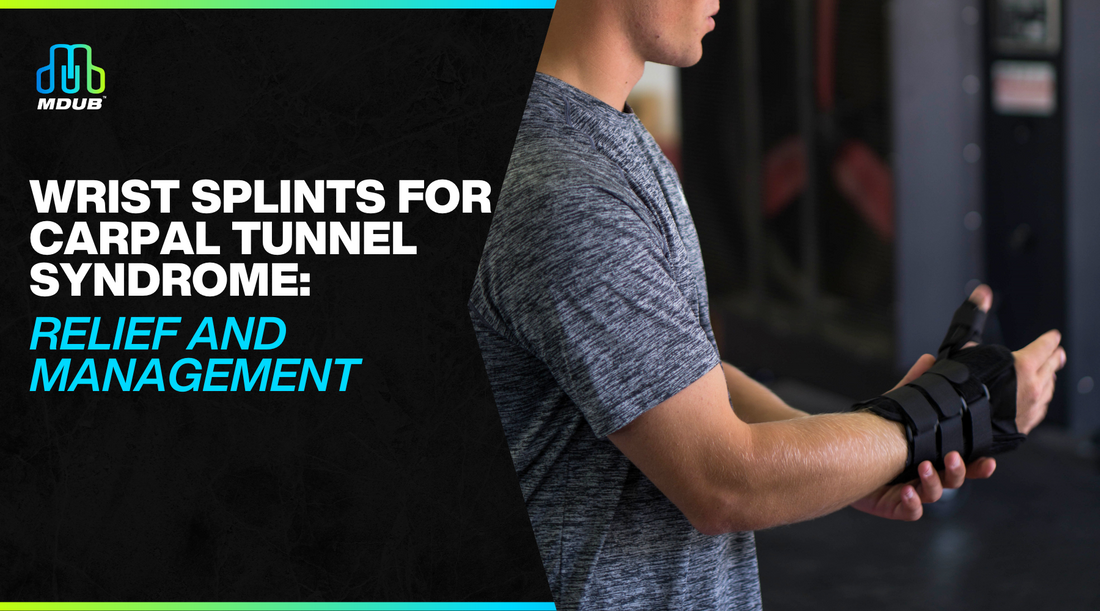
Wrist Splints for Carpal Tunnel Syndrome: Relief and Management
Share
Carpal tunnel syndrome is a common medical condition that affects the hand and wrist. It mostly occurs in women, carpenters, sewers, drivers, assembly line workers, and heavy keyboard users. In this informative article, let's find out more about carpal tunnel syndrome, its key characteristics, its symptoms, and how wrist splints can give relief.
What is Carpal Tunnel Syndrome?
It is also known as median nerve compression. It happens in the median nerve, which runs from the forearm to the passage in the wrist called carpal tunnel to the hand, causing numbness, tingling, or weakness. The carpal tunnel is a narrow passage formed by bones and connective tissues.
Causes of Carpal Tunnel Syndrome
- Repetitive hand and wrist movements which can irritate and inflame the tendons in the carpal tunnel
- Wrist injury
- Hormonal changes for women, it can be connected to pregnancy and menopause
- Heredity
- Health conditions like diabetes, rheumatoid arthritis, and thyroid disorders which can increase the risk of Carpal Tunnel Syndrome
Symptoms of Carpal Tunnel Syndrome
- Numbness and Tingling - Patients often experience these sensations primarily in the thumb, index finger, middle finger, and ring finger. These symptoms may extend up to the arm.
- Weakness - Weakness in the hand, tendency to drop objects, and grip strength may decrease.
- Pain - Patients may experience hand and wrist pain that can be felt in the arm or fingers.
- Sensation changes - Patients may have difficulty determining between hot and cold sensations in the affected hand.
- Nighttime symptoms - Patients encounter worsened numbness and pain during nighttime which can disrupt sleep.
One of the effective treatments for carpal tunnel syndrome is wrist splinting. It is a non-invasive and traditional treatment method that is made of materials like fabric, plastic, or metal. Wrist splints can be custom-fitted or purchased over the counter. Wearing a wrist splint at night keeps the wrist in a neutral position, reducing pressure on the median nerve and relieving symptoms like numbness and pain.
Here are some of the benefits of wrist splints:
- Immobilization - Wrist splints are designed to restrict the wrist joint movement to reduce strain and stimulate healing.
- Stabilization - Wrist splints can help prevent further damage by stabilizing the wrist.
- Pain and pressure relief - Wrist splinting can provide relief by limiting movement that might aggravate pain-inducing conditions.
- Swelling reduction - Immobilization can help in reducing swelling around the wrist, which is common after injuries or due to inflammation.
- Support and Protection - Wrist splints support weak or unstable wrists for better function and prevent injuries. They also protect wrists from stress during intense activities.
- Customization and adjustability - In some cases, healthcare professionals may recommend custom-made to ensure precise fit and maximize comfort. Wrist splints can also have adjustable straps so wearers can adjust the level of support and compression.
- It should be worn consistently, especially during activities that may worsen carpal tunnel syndrome symptoms.
- Ensure the splint is properly fitted to maintain the wrist in a neutral position. See a healthcare professional for recommendations.
- Wearing a wrist splint during nighttime is beneficial because symptoms may worsen during sleep.
Carpal tunnel syndrome is a common condition that can be effectively managed if diagnosed and treated early. With the guidance of a healthcare professional, wrist splints are one of the effective ways of treating this medical condition, especially at nighttime.
